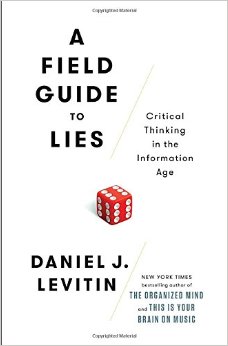Another book that wasn't prepared for a Trump victory
A little while ago, I wrote about a new phenomenon: books that seem completely different now that Donald Trump is president-elect of the United States. Over the weekend, I found another title to add to the ever-growing list.

I'm sure when Daniel J. Levitin read in Seattle from his new book A Field Guide to Lies: Critical Thinking in the Information Age back in September, he probably seemed to have his finger on the pulse of the zeitgeist. After all, lies and untruths were everywhere in the media during the 2016 election, right? Right. And Field Guide is a very helpful guide to the way that news organizations and partisan hacks can misuse information, from statistics to maps to graphs. Levitin proves that no so-called "fact" is safe from manipulators up to and including Fox News.
But what Levitin couldn't see coming when he wrote Field Guide is the idea of fake news. These aren't manipulated facts, they're entirely made up facts. Levitin does address an early Trump campaign lie — Trump's totally false claim that he saw New Jersey Muslims celebrating on 9/11 — but it feels ike an aside, a parenthetical mention between the importance of sourcing facts and the perils of aggregation.
In fact, fake news turned out to be a major source of conflict in the 2016 campaign. Trump didn't just manipulate the y axis on graphs — he made up facts altogether, and there's not much Levitin has to say about that kind of whole-cloth tailoring.
This is not to say that Field Guide isn't valuable; it absolutely is. I learned a lot about statistics and probability and graphing. But Field Guide practically feels quaint in the age of our incoming president. At the very least, Levitin will have to add a new chapter for the paperback release to keep up with the sheer amount of lies flying around out there.